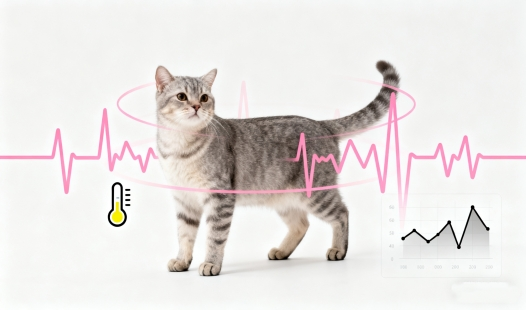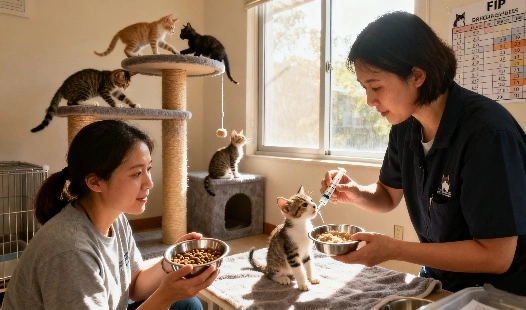For a long time, feline infectious peritonitis (FIP) was regarded as one of the most devastating and incurable diseases in cats, leaving veterinarians and pet owners with very limited treatment options. This viral disease, caused by a mutated feline coronavirus, often led to rapid deterioration and death, particularly in young or immunocompromised cats. However, the discovery of GS-441524 has revolutionized the way veterinarians approach FIP, offering a scientifically validated treatment that directly targets the virus responsible for the disease. The introduction of this antiviral compound has transformed FIP from a hopeless diagnosis into one with a realistic chance of recovery. In this article, we explore the remarkable therapeutic potential of GS-441524 by presenting detailed recovery stories of cats once considered terminal, whose lives were saved through timely and well-managed GS-441524 therapy, providing new optimism for the future of feline medicine.
Case Studies of Critically Ill FIP Cats
The Dire Prognosis: Understanding FIP's Impact
Feline Infectious Peritonitis (FIP) is one of the most heartbreaking illnesses faced by cat owners and veterinarians alike. Caused by a mutated strain of the feline coronavirus (FCoV), it triggers a severe immune-mediated reaction that leads to widespread inflammation in organs such as the abdomen, chest, and brain. FIP most commonly affects young or immunocompromised cats, particularly those living in shelters or multi-cat households where viral exposure is high. The disease presents in two primary forms—wet (effusive) and dry (non-effusive)—each with distinct clinical manifestations ranging from fluid buildup in the body cavities to neurological and ocular symptoms. Before the development of GS-441524-based dry fip treatment, the prognosis for affected cats was grim, with most succumbing to the illness within a few weeks of diagnosis, despite intensive supportive care.
Introducing GS-441524: A Ray of Hope
The emergence of GS-441524, a nucleoside analog that disrupts viral RNA replication, has dramatically altered the landscape of FIP management. This breakthrough antiviral compound targets the virus at a molecular level, effectively halting its replication and giving the immune system a chance to recover. For cats once deemed terminally ill, GS-441524 represents a genuine lifeline. In clinical settings, veterinarians have reported rapid improvements in appetite, energy, and body condition within days of initiating therapy. The following case studies provide a closer look at critically ill cats who were given a new lease on life through GS-441524 treatment, highlighting not only their recovery journeys but also the importance of early intervention, precise dosing, and ongoing monitoring in achieving sustained remission.
Turnaround Stories with GS-441524 Therapy
Case 1: Luna's Miraculous Recovery from Wet FIP
Luna, a 1-year-old Persian cat, was diagnosed with wet FIP after developing a severe abdominal effusion. Her prognosis was grim, with veterinarians estimating she had only weeks to live. Luna's owners decided to try GS-441524 as a last resort.
Treatment protocol:
- Initial dosage: 5 mg/kg daily
- Duration: 12 weeks
- Monitoring: Weekly blood tests and physical examinations
Results: Within two weeks, Luna's effusion began to resolve. By week 6, her appetite and energy levels had significantly improved. At the end of the 12-week treatment, Luna was symptom-free and her blood work had normalized. Follow-up examinations over the next year showed no signs of relapse.
Case 2: Max's Battle Against Neurological FIP
Max, a 3-year-old domestic shorthair, developed neurological symptoms associated with dry FIP treatment. He experienced seizures and ataxia, leaving him unable to walk. Max's veterinarian suggested GS-441524 therapy as an experimental treatment.
Treatment protocol:
- Initial dosage: 10 mg/kg daily (higher dose due to neurological involvement)
- Duration: 16 weeks (extended due to severity)
- Adjunct therapies: Anti-seizure medication, supportive care
Results: Max's seizures stopped within the first week of treatment. By week 4, he regained some motor function. After 16 weeks, Max had made a full neurological recovery. His case demonstrates the potential of GS-441524 even in severe neurological FIP cases.
Lessons from Successful Treatment Outcomes
Early Intervention is Crucial
The case studies highlight the importance of early diagnosis and treatment initiation. Cats that received GS-441524 therapy soon after diagnosis generally had better outcomes and shorter treatment durations.
Dosage Adjustments May Be Necessary
Veterinarians found that some cats, particularly those with neurological or ocular FIP, required higher doses or extended treatment periods. Flexibility in treatment protocols, guided by clinical response and regular monitoring, was key to successful outcomes.
Supportive Care Enhances Treatment Efficacy
While GS-441524 targets the virus directly, supportive care played a crucial role in recovery. This included:
- Proper nutrition and hydration
- Management of secondary infections
- Stress reduction
- Regular veterinary check-ups
Long-term Monitoring is Essential
Even after completing GS-441524 treatment, ongoing monitoring was crucial to detect any potential relapses early. Most successfully treated cats remained symptom-free, but vigilance in the months following treatment proved important.
Conclusion
The real-life recovery stories of cats treated with GS-441524 offer compelling evidence of its efficacy against FIP. From wet FIP cases like Luna to severe neurological presentations like Max, this treatment has demonstrated its potential to save lives once considered lost. While more research is needed to fully understand long-term outcomes and optimal treatment protocols, GS-441524 represents a significant advancement in feline medicine, offering hope where there was once only despair.
FAQ
1. How effective is GS-441524 in treating FIP?
Studies have shown that GS-441524 has a success rate of over 80% in treating FIP when administered correctly. However, effectiveness can vary depending on the form of FIP, the stage of the disease at treatment initiation, and individual cat factors.
2. Are there any side effects associated with GS-441524 treatment?
While generally well-tolerated, some cats may experience mild side effects such as injection site reactions, temporary loss of appetite, or mild gastrointestinal upset. Serious side effects are rare but can include kidney damage in some cases.
3. How long does GS-441524 treatment typically last?
The standard treatment protocol is 12 weeks, but this can vary. Some cats, especially those with neurological or ocular FIP, may require longer treatment periods of up to 16-20 weeks. Regular monitoring and veterinary guidance are essential in determining the appropriate treatment duration.
Discover BLOOM TECH's Premium GS-441524: Your Trusted FIP Treatment Solution
The importance of high-quality GS-441524 in rescuing cats is something we at BLOOM TECH well grasp. The unrivaled purity and effectiveness of our pharmaceutical-grade GS-441524 are guaranteed by its manufacturing under rigorous GMP conditions. Our steady supply can meet all of your FIP treatment demands, thanks to our 10 years of expertise in organic synthesis. Don't let FIP claim another precious life - reach out to BLOOM TECH today for a superior GS-441524 solution. Contact us at Sales@bloomtechz.com to learn more about how we can be your trusted GS-441524 supplier.
References
1. Pedersen, N. C., et al. (2019). Efficacy and safety of the nucleoside analog GS-441524 for treatment of cats with naturally occurring feline infectious peritonitis. Journal of Feline Medicine and Surgery, 21(4), 271-281.
2. Murphy, B. G., et al. (2020). Treatment of cats with feline infectious peritonitis with the nucleoside analog GS-441524. Animals, 10(4), 641.
3. Dickinson, P. J., et al. (2020). Antiviral treatment using the adenosine nucleoside analogue GS-441524 in cats with clinically diagnosed neurological feline infectious peritonitis. Journal of Veterinary Internal Medicine, 34(4), 1587-1593.
4. Addie, D. D., et al. (2020). Feline infectious peritonitis. ABCD guidelines on prevention and management. Journal of Feline Medicine and Surgery, 22(11), 1028-1050.














_副本_1757906640273.webp)

_副本_1761531561061.webp)

_副本_1761269474138.webp)



